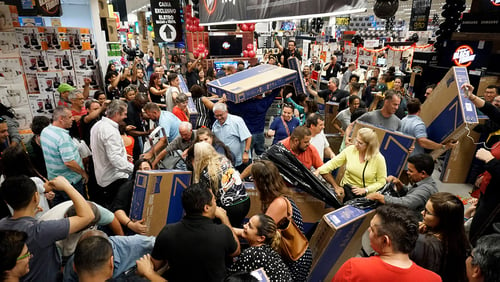How a cross-platform social media strategy can help you build your brand

Posted by Marija Citic
July 27th, 2018
Rome wasn’t built in a day – and neither were most of the big brands you know and love.
Even world-beaters like Apple have had really, really bad days, with crushing defeats that led to near-extinction.
And that was 20 years ago, when start-ups weren’t constantly springing up.
Competition is strong, advertising is expensive and getting attention from consumers is harder than ever. So how can you overcome these obstacles and make the most out of your advertising money?
Well, a cross-platform social media strategy may just be your secret weapon.
Why go cross-channel when you’re not even sure if *one* channel is worth it?
Each social platform exists for a different reason. We’re not going to regurgitate the difference because we’re gonna presume that you’re a marketer so you actually use these channels and get it.
Cool? Cool.
Ultimately, the benefit of a cross-platform social media strategy is that you can maximise your brand’s impact and achieve your brand goals by uniting different parts of your strategy.
Each social media platform is shaped on users’ personal traits and behaviour, and this is exactly what makes social media so valuable to brands.
Now, before you start doing anything on social media make sure you have your buyer personas drafted out in detail.
Your buyer personas will present different segments of your audience, each with specific demographic and behavioural traits. Based on these traits, brands can easily identify where their target audience spends time and how best to communicate with them.
Different segments of your target audience will spend time on different social media platforms; to maximise your audience reach and communicate to your customers in a personalised way, you need to be present on different platforms.
Not convinced?
Take a look at the chart showing how social media efforts contribute to brand goals:
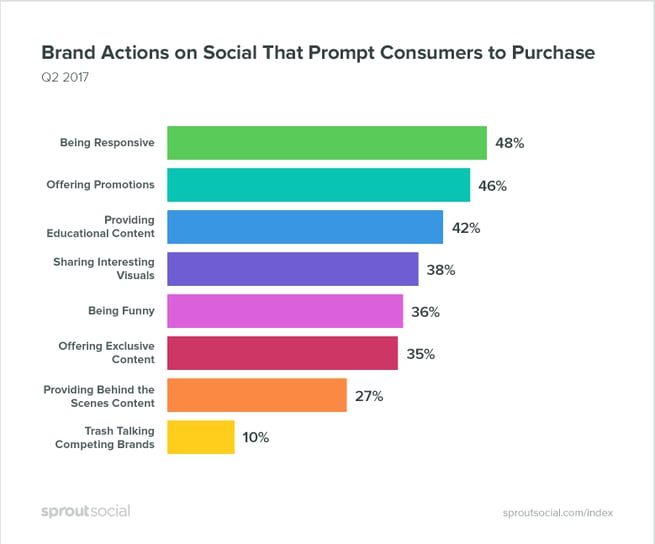
The graph also gives a very interesting insight regarding social media content. Delivering high quality content to your audience seriously pays off as 42 percent of consumers will be more likely to buy from your brand if they are provided with educational content.
However, social media isn’t ‘one size fits all’ – and to deliver high quality content you need to adjust your message based on the platform.
Don’t even think about copying and pasting from one platform to the other and calling that a strategy.
See, Facebook is excellent for experimenting with different types of content and formats; Snapchat is great if you want to try out vertical video; Pinterest demands great aesthetics; and Twitter is all about the now.
Using a combination of platforms means that you can truly showcase your brand’s creativity and customer centricity. And you know what’s even better? Finding the right mix of platforms that will maximise your brand’s impact.

What platforms should you choose for a cross-platform mix?
Before you start panicking, take a deep breath and go back to your buyer persona. Think about how they get information and the social platforms they use the most.
However, keep in mind that knowing where and how to reach your audience is only half the work because you need to prompt your audience to take some type of action once they see your post.
Whether you want to drive traffic to your website or build your customer database, social media can support your brand goals.
For example, Facebook is great if you want to generate leads or sell products online or even sell offline. Instagram is the perfect choice if you want to engage your audience but it’s also growing as a platform for ecommerce. If your audience is Gen Z, you should advertise on Snapchat, while LinkedIn is perfect for the professional crowd.
The chosen platform also depends on the type of content you want to share with your potential customers. If you’re feeling particularly creative and bold, you might want to try the newest ad formats that use Augmented Reality to give your customers an engaging experience.
It’s not all about ‘new and shiny’ either. With some creativity, good old formats like video posts and carousels can be a great way to tell your brand’s story.
Take a look at the example to see how video and carousel combined to share a story:
The main takeaway here is that each platform has a different purpose, and combining them will give you a unique opportunity to reach and engage different brand stakeholders.
How do other brands do it?
Consumers are relying more and more on social media channels to shop, make inquiries and get the latest news from their favourite brands.
Managing Facebook, Instagram, Snapchat and other channels has become a full-time job, but the merit is there for marketers looking to build a brand.
Casper is a US mattress store. A mattress store doesn’t sound so exciting, right? You’re probably imagining an ad that features different types of mattresses and their price, with a link to where you can buy them.
Not so.
Casper uses different social media channels to tell a brand story that is far greater than, “we’re just another place where you can buy that thing you sleep on.” Casper, on the other hand, is in the business of “changing the way the world sleeps.”
Here’s how they use Facebook, Twitter and LinkedIn to communicate with their potential audience. Grab a notepad and get ready to learn.
Facebook and quality video content go hand in hand. Casper goes for low-hanging fruit here, with a cute video of puppies.
The post has a clickable “shop now” button that will take you to Casper’s online store where you can browse and buy their products.
This ad is a good example of eye-catching content that has a clear purpose to prompt people to shop. Sometimes, it really can be this simple.
Twitter doesn’t have as large a potential reach as Facebook and it’s missing many fancy ad formats, but it’s still a popular platform for brand building.
To make the most of Twitter, you need to keep your message short and to the point. Casper uses Twitter mostly to promote its magazine articles and to retweet cute and favourable reviews from its customers, though it also shares its signature, funny posts:


Unlike Facebook, Casper uses Twitter to interact with the community and build its brand image.
LinkedIn is a perfect channel to showcase your brand and company as a strong player in the industry and as a great place to work.
Instead of cute and funny posts, Casper uses LinkedIn to promote itself as a very successful brand:
Promoting partnerships
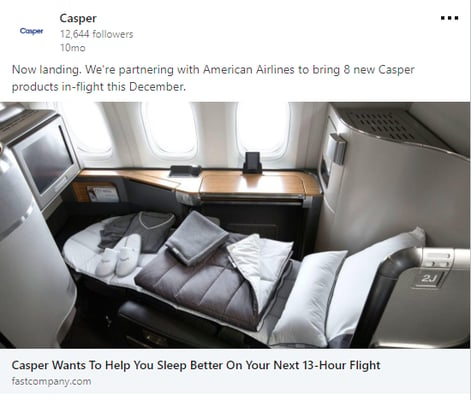
Promoting Casper as a workplace
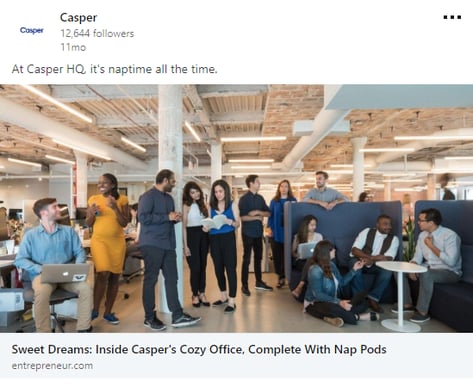
Business diversification
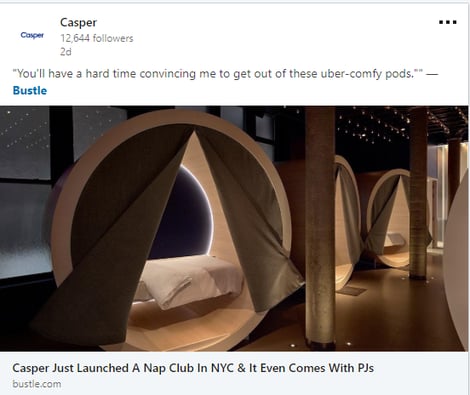
Is a cross-platform social media strategy the right fit for your brand?
Advertising cross-platform is a great solution for reaching different audience segments and promoting your brand in an impactful manner.
Compared to TV and print, social media is still inexpensive and its influence is growing as technology develops. Building a brand won’t happen in an instant but it’s a good start for future activities – especially if you’re just starting and you have limited budget.
To use the old chestnut, you’ve heard the story of the Dollar Shave Club and its overnight success, right?
A cross-platform media strategy is a long-term project that can build a strong brand and give you the competitive advantage needed to stay ahead of the game.
Looking to create a knock-out social media strategy?
We’re here to help! Our experienced social media and lead generation professionals will give you exactly what you need to generate qualified leads and grow your business. Get in touch to find out more about our services.

Marija Citic

Previous Post
Global win for 256 in Content Marketing Awards
Next Post

Long live Don Draper (or why advertising is alive and well)
Subscribe Here
You may also like...
Nicole Thomsen | Dec 11, 2023
Nadia Reckmann | Nov 23, 2023
Nicole Thomsen | Nov 6, 2023




